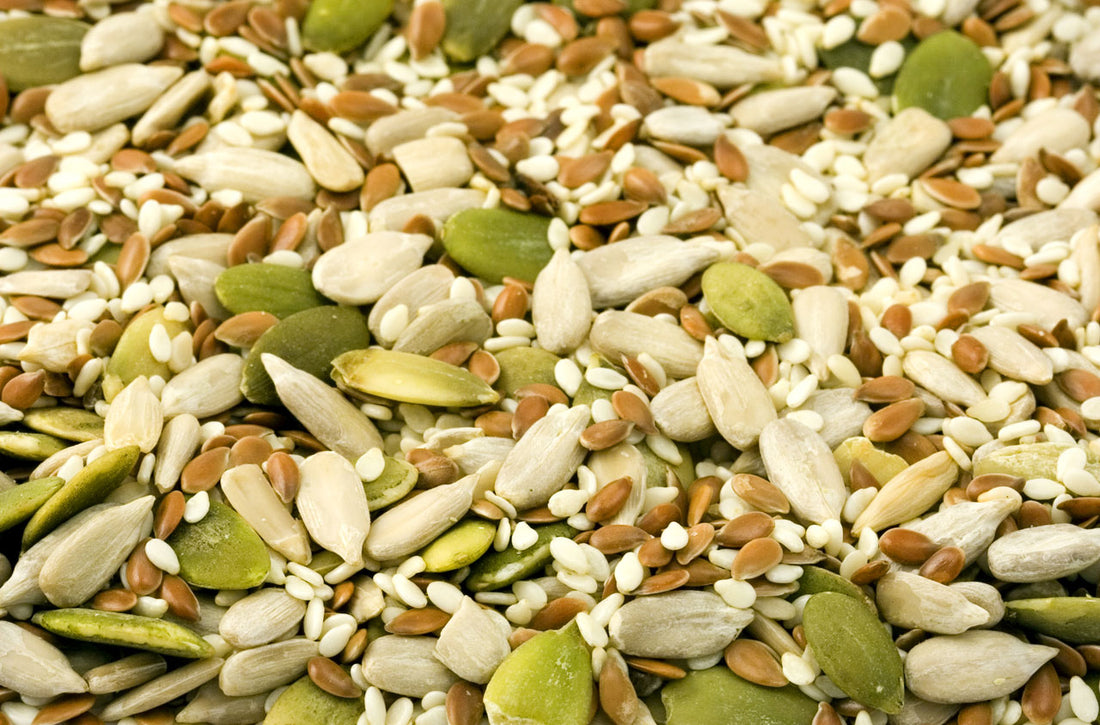
Seeds mixing in bread, a proposal.
Share
Seeds are a great way to differentiate your bread and make it stand out.
There is a huge variety of seeds to choose from both in tasting profile and size.
The inclusion of such solids can be external, by coating your dough before proofing or cooking, or internal by mixing them directly in the dough.
The hardest process is to properly insert seeds into the dough without breaking the gluten network.
As a reminder, the gluten network is created by mixing water plus a flour that contains gluten (wheat, rye, barley, triticale, malt).
Once the network is properly created it is important not to break it, and the most common ways to ruin your gluten network are the following:
- Overworking the dough
- Bad shaping technique
- Wrong solids (including seeds) incorporation technique
Today we will focus on the last point, specifically seeds incorporation technique.
The Technique
When buying seeds they come dry in sealed packages or bags with a long expiration date (due to the low water activity called “aW”).
Some seeds can be incorporated dry but they might result hard to chew and they can easily burn when they are close to the external layers of your bread.
The best way to incorporate seeds is by hydrating them overnight with an equal amount of water.
So a mix of 500g of seeds will be paired with 500g of water in a closed container and kept in the fridge at 4º Celsius.
Keeping hydrated seeds at 4º allows us to avoid bacteria proliferation and to have a cold element for our dough at the time of insertion which will help not to break our gluten network.
(The optimal gluten network formation temperature for a dough is 20º Celsius and already at temperatures above 24º you start to experience a bad gluten network development).
Over the years I had the opportunity to work with different bakers and try many techniques for seeds incorporation but the following always gave the best results both in terms of mixing times and gluten network smoothness.
A typical bread with seeds recipe has the following ingredients:
- Flour
- Water
- Some kind of yeast or fermented element for proofing
- Salt
- Seeds
The normal mixing technique is in this order:
- Put all the flour+yeast in your mixing bowl
- Add most of the water
- Mix until the dough is homogeneous
- Add salt
- Add the remaining water slowly
- Add your seeds (soaked overnight)
After many experiments I came to the conclusion that a different mixing technique greatly improves the dough characteristics when making a bread with seeds.
My technique is the following:
- Put all the flour+yeast in your mixing bowl
- Add most of the water (80-90%)
- Mix until the dough is homogeneous
- Add the rest of the water and mix
- Make it rest for 5 minutes
- Add your seeds (soaked overnight)
- Mix on 1st speed until the seeds are evenly distributed
- Add salt and mix at 1st speed until smooth
- Make it rest 10 mins in bowl
- Remove from the bowl
This working sequence creates a dough with much better elasticity and extensibility without losing too much time with a busy mixing bowl that could be needed for other preparations.
The resting times help gluten network relaxation thanks to the beginning of autolysis.
I tried this sequence with different seeds and a mix of seeds, it always gives the same great result.
Suggestions
Please remember to account for the water weight added in your seeds when creating your recipe.
In terms of weight I suggest 5-15% of seeds over the whole weight of your bread with 10% being an optimal amount in terms of texture and seeds to dough ratio.
I hope this procedure will help you to achieve better results, it worked for me with many seeds and kinds of flours.
Let’s make good bread great, together.
Flavio de Stefano